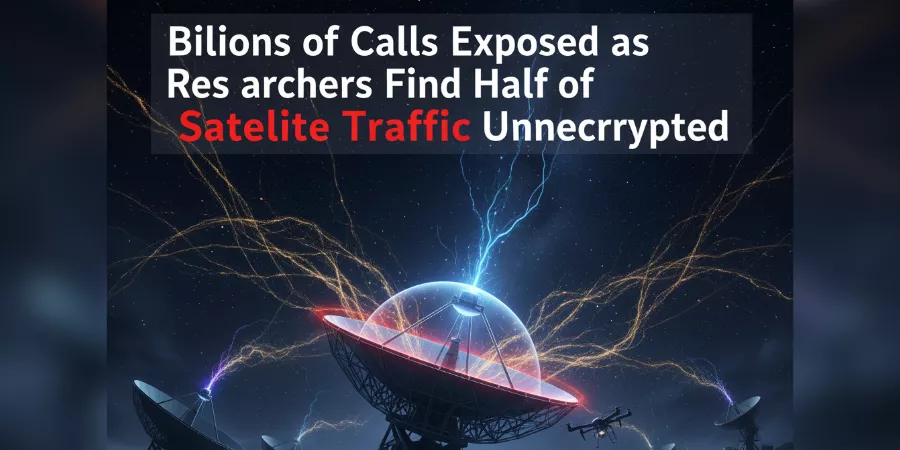Your forgotten Gmail account might soon disappear forever. Google announced a significant policy shift that will permanently delete user accounts inactive for at least two years, with the deletion process beginning January 1, 2024. While the Mountain View tech giant frames this as a security measure to protect users from phishing attacks and data breaches targeting abandoned accounts, the policy raises urgent questions for millions who maintain dormant Google accounts containing years of emails, photos, and documents. With multiple email warnings preceding deletion, users face a clear choice: log in periodically or lose everything associated with inactive accounts from Gmail correspondence to Google Drive files and Photos libraries accumulated over potentially decades of digital life.
Why Google Is Purging Inactive Accounts
Google’s rationale centers on security and platform integrity rather than storage cost reduction, according to company statements.
Andrea Núñez, Privacy & Data Governance Manager at Google, explained the security imperative: “Accounts with continued periods of inactivity are more likely to be compromised in phishing attacks or other cyber threats.” This assessment reflects documented cybersecurity realities abandoned accounts become attractive targets for malicious actors precisely because owners no longer monitor them for suspicious activity.
Inactive accounts typically feature several vulnerability factors:
Outdated security protocols: Accounts created years ago may lack modern protections like two-factor authentication, using passwords that predate current complexity requirements or have been compromised in unrelated data breaches.
No breach monitoring: Active users receive and respond to security alerts about suspicious login attempts or unauthorized access. Inactive account owners never see these warnings, allowing attackers indefinite access once they compromise credentials.
Valuable data persistence: Old accounts often contain personally identifiable information, financial records, and authentication credentials for other services treasure troves for identity thieves who can operate undetected for months or years.
Platform resource allocation: While Google didn’t emphasize cost savings, maintaining billions of inactive accounts consumes storage infrastructure, backup systems, and security scanning resources that could support active users more effectively.
By instituting a two-year inactivity threshold, Google aims to eliminate the accumulated security debt of abandoned accounts while streamlining platform operations across Gmail, Drive, Photos, Calendar, and integrated services.
What Counts as “Inactive”? The 24-Month Clock
Google defines inactive accounts with precision: no login activity for 24 consecutive months triggers eligibility for deletion.
This definition is straightforward but raises important nuances:
Login requirement: Simply receiving emails or having others access shared Google Drive documents doesn’t reset the inactivity clock. The registered account owner must personally log in to demonstrate continued use and prevent deletion.
Cross-service recognition: Logging into any Google service Gmail, YouTube, Google Maps, Play Store, or others counts as activity across the entire account. Users don’t need to access every Google product individually; a single authenticated login anywhere in the ecosystem resets the timer.
Passive consumption insufficient: Watching YouTube videos without logging in, searching Google anonymously, or having emails forwarded to other accounts doesn’t constitute activity. Google requires authenticated interaction demonstrating the account owner’s continued engagement.
Grace period notifications: Account holders receive multiple email warnings before deletion proceeds, providing opportunities to log in and prevent data loss. These notifications escalate as the deletion date approaches, though Google hasn’t specified exact timing intervals.
The 24-month threshold balances security objectives against user convenience long enough that temporary disuse (extended travel, medical issues, or simply forgetting about secondary accounts) shouldn’t trigger deletion, yet short enough to address the security risks of genuinely abandoned accounts.
What Gets Deleted: The Total Data Wipeout
When Google deletes an inactive account, the erasure is comprehensive and irreversible.
Users lose access to:
Gmail: Every email sent and received, contact lists, filters, and labels accumulated potentially over decades. For many users, Gmail serves as an unofficial personal archive containing correspondence with deceased relatives, job offer letters, travel confirmations, and irreplaceable personal history.
Google Drive: All documents, spreadsheets, presentations, and files stored in the cloud including items shared with others who will lose access when the account disappears.
Google Photos: Photo and video libraries potentially representing years of family memories, travel documentation, and life milestones. Unlike physical photo albums that persist regardless of owner attention, cloud-stored memories vanish with account deletion.
YouTube: Channel subscriptions, playlists, video uploads, and comments disappear. Content creators with inactive channels lose their entire video libraries and audience connections.
Google Calendar: Historical calendar data, recurring appointments, and shared calendars become inaccessible.
Google Play: Purchased apps, games, books, and movies tied to the account vanish, along with in-app purchases and game progress.
Third-party integrations: Services using “Sign in with Google” authentication may become inaccessible if the underlying Google account disappears.
Google emphasizes the permanence: once deleted, data cannot be recovered. No grace period allows retrieval after deletion completes. Users who miss notification emails or fail to log in within the 24-month window lose everything irrevocably.
Security Benefits: Protecting Users Through Deletion
Cybersecurity experts largely support Google’s inactive account policy as sound security practice.
Inactive accounts represent low-hanging fruit for cybercriminals who systematically test leaked password databases against major platforms. When attackers successfully access abandoned accounts, they exploit them for:
Phishing platforms: Sending scam emails from legitimate Gmail addresses to victims’ contact lists, leveraging trust associated with familiar sender addresses.
Malware distribution: Sharing infected files through Google Drive links that appear credible because they originate from real accounts.
Password reset attacks: Using compromised email accounts to reset passwords for banking, social media, and other services, pivoting from Google account access to comprehensive identity theft.
Spam campaigns: Hijacking dormant YouTube channels or Google accounts to post spam comments, spreading misinformation, or conducting influence operations.
By eliminating inactive accounts, Google removes these attack vectors entirely a proactive security measure that protects not just account owners but also their contacts and the broader user ecosystem. Deleted accounts can’t be compromised; attackers gain nothing from credentials providing access to nonexistent services.
This approach aligns with security principle of reducing attack surface minimizing the number of potential entry points adversaries might exploit. Every inactive account deletion represents one less vulnerability in Google’s infrastructure and one less tool available to malicious actors.
Privacy Concerns: When Security Measures Threaten Data Access
Despite security benefits, privacy advocates have raised concerns about users losing access to irreplaceable personal data.
The policy creates several problematic scenarios:
Digital inheritance: Family members of deceased users may lose access to precious photos, emails, and documents if accounts cross the inactivity threshold before heirs navigate Google’s legacy contact provisions.
Medical or personal crises: Users experiencing extended hospitalization, incarceration, military deployment, or other circumstances preventing internet access could return to discover their digital lives erased.
Secondary account neglect: Many users maintain multiple Google accounts for different purposes personal, professional, side projects and may not remember to log into all periodically. Forgotten secondary accounts containing valuable data face deletion.
Notification failures: Email warnings sent to inactive accounts assume users regularly check those inboxes. Users who’ve migrated to different email providers or lost access to recovery contact information may never see deletion warnings.
Cognitive burden: The policy requires users to mentally track login frequency across potentially multiple accounts an attention tax that disproportionately affects elderly users, those with cognitive disabilities, or simply busy people juggling numerous digital services.
Critics argue that user data shouldn’t expire based on arbitrary inactivity periods. Unlike physical storage requiring ongoing resource allocation, cloud storage costs continue declining, theoretically enabling indefinite preservation of user data regardless of access frequency.
The tension reflects competing values: security through proactive deletion versus data preservation respecting users’ reasonable expectations that personal information remains accessible indefinitely once stored.
How to Prevent Account Deletion: Simple Steps
Users wishing to preserve inactive Google accounts have straightforward options:
Set calendar reminders: Schedule annual or biannual reminders to log into all Google accounts, ensuring none approach the 24-month inactivity threshold.
Enable two-factor authentication: While not preventing inactivity-based deletion, 2FA protects accounts from unauthorized access the underlying threat the deletion policy addresses.
Consolidate accounts: Merge secondary accounts into primary ones where practical, reducing the number of accounts requiring periodic attention.
Download data archives: Use Google Takeout to periodically export account data emails, photos, documents creating local backups independent of cloud service policies. This ensures data preservation even if accounts are deleted.
Add recovery contacts: Configure recovery email addresses and phone numbers for all accounts, ensuring deletion warnings reach users even if they’re not monitoring the primary account inbox.
Share access appropriately: For critical accounts, consider adding trusted contacts through Google’s legacy contact feature or sharing credentials securely with family members who can maintain login activity if needed.
The simplest prevention: log in at least once every two years. Even brief authentication checking Gmail, watching one YouTube video while signed in, or opening Google Maps resets the inactivity clock entirely.
What This Means for Google’s Future Account Management
The inactive account deletion policy signals Google’s willingness to enforce active use requirements even at the cost of reducing total user count metrics.
This philosophical shift from “accumulate users indefinitely” to “maintain engaged user base” may preview future policies:
- Stricter authentication requirements
- More aggressive security measure implementations
- Potential paid tiers for account preservation beyond inactivity thresholds
- Enhanced data portability features enabling easier migration to competing services
For users, the message is clear: Google accounts require periodic attention. The days of creating accounts and assuming indefinite preservation have ended, replaced by an engagement expectation where inactivity carries consequences.
Whether this approach becomes industry standard with Microsoft, Apple, and others implementing similar policies remains to be seen. But Google’s move establishes precedent that cloud service providers can enforce account lifecycle management even for free consumer services.
Your digital life now has an expiration date. Remember to reset it occasionally.
















